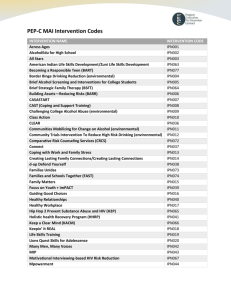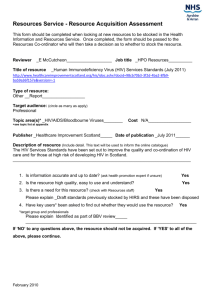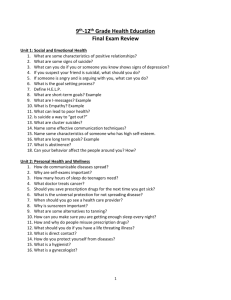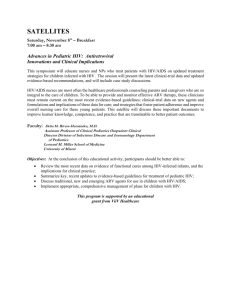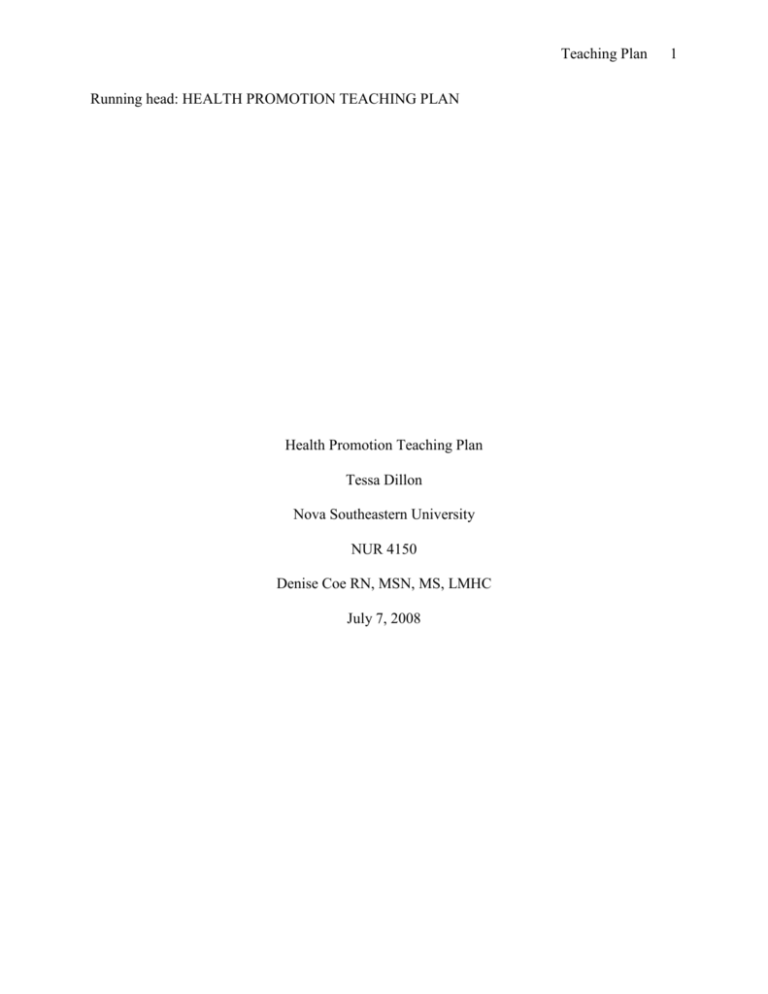
Teaching Plan
Running head: HEALTH PROMOTION TEACHING PLAN
Health Promotion Teaching Plan
Tessa Dillon
Nova Southeastern University
NUR 4150
Denise Coe RN, MSN, MS, LMHC
July 7, 2008
1
Teaching Plan
2
Health Promotion Teaching Plan
Healthy People 2010 have identified responsible sexual behavior as one of the leading
health indicators (US Department of Health & Human Services, n.d., leading health indicator
section). For this community the guidelines involve access to care, Human Immunodeficiency
Virus (HIV) and access to quality health services (US Department of Health, n.d., Healthy
People fact sheet section). After speaking with community resources, it is noted that there is an
increase in diagnosis of HIV infection among the elderly population. This led to the discovery of
the community health care issue for this project.
The target population for the teaching plan includes persons over fifty-five who live in
the local communities surrounding Orange and Lake counties. The population comes from many
socioeconomic backgrounds. Mostly are retired individuals, they may be single or married, live
in single family homes or in assisted living facilities. Others live in adult community trailer
parks. The educational levels of the population vary from college degreed individuals to those
who have not graduated from high school.
Purpose and Objectives
The purpose of this project is to provide information to an underserved population
regarding HIV transmission and modes of infection. The objectives are to increase awareness of
the increasing rates of newly diagnosed persons with HIV in persons age fifty-five and older,
provide information about methods to protect from disease transmission, and describe the
individual’s responsibility regarding sexual health. It is the goal that these objectives reduce the
number over fifty-five persons newly diagnosed with HIV.
Justification
This topic was chosen in response to the noted increase in newly diagnosed individuals
Teaching Plan
3
over age fifty with HIV. “According to CDC, sexually active older people are much less likely
than the young to use condoms, mainly because they do not see themselves as at-risk for the
disease or pregnancy” (Florida Department of Health, 2007, Fact sheet section). In Florida, 27%
of men and 81% of women diagnosed through 2007 with HIV contracted the disease through
heterosexual sexual contact (Florida Department of Health, Fact sheet section; Gott, 2001). This
is an astounding number of elderly in Florida who have been diagnosed HIV positive. The need
for education is evident by the numbers alone. A survey of residents in Orange and Lake
County’s population did not show an interest in learning and the literature supports this finding
for the following reasons. First, older adults do not perceive themselves as being at risk for HIV;
therefore do not practice safe sexual activity habits (Maes & Louis, 2003). Next, many are not
knowledgeable about modes of transmission and consider HIV a disease of gay or lesbian people
(Maes & Louis). Finally, the older person is not considered by health care providers as being at
risk for HIV (Casau, 2005). These factors lead to an information gap between health care
providers and the elderly person at risk for contracting HIV.
Using Neuman Systems Model is an effective method for identifying with the client
system. Using primary prevention strategies, this program can increase the lines of defense thus
reducing risk factors and preventing the stress that could lead to illness (Stanhope & Lancaster,
2004, Chap. 9). Health promotion is the primary defense to increase the community’s lines of
resistance. Intervention goals supported in this teaching plan will assist in maintaining a healthy
community (Stanhope & Lancaster).
Methods of Teaching
The methods of teaching include pamphlets, handouts, seminar, and discussion with
question and answer sessions. Pamphlets and handouts will be used for those clients who do not
Teaching Plan
4
wish to participate in seminar but are willing to accept information. Handouts in English and
Spanish are helpful for those unable to attend seminars and can be left in community areas of
assisted living facilities and community center of local adult communities. Short seminars can be
held in small groups to discuss the objectives. Finally, one on one question and answer sessions
will be useful for those who are interested in more information that is specific.
Method of Evaluation
For a teaching plan to be successful, it is necessary to evaluate whether the information
given is received and retained by the population. On method for verifying this is pre and post
testing. A short test is given before each seminar to evaluate the participant’s level of
understanding about the topic. At the conclusion of the program, a second test is given to test the
comprehension of the information taught. After review of the answers, the participant is offered
opportunity to ask questions and receive reinforcement of anything that was not understood.
Another method of evaluation is return demonstration. This could be used for any techniques that
are demonstrated during the seminar. Return demonstration allows the instructor to verify that
the skill is performed correctly and offer reinforcement and reinstruction for incorrect
performance of the skill.
Summary
The teaching plan is an integral part of planning a program to instruct a community. This
project is important for reducing the number of new cases of HIV among the elderly. The
different methods of instruction will allow the information to reach a population that is reluctant
to discuss a topic that is seen as taboo among their generation. By reaching just one person, the
door is opened to allow for the instruction of many more and the message is received and utilized
to reduce the spread of HIV.
Teaching Plan
5
References
Casau, N. (2005). Perspective on HIV infection and aging: emerging research on the horizon.
Clinical Infectious Diseases, 41, 855-863. Retrieved May 29, 2008, from EBSCO
Publishing Citations database.
Florida Department of Health. (2007). Fact sheets, youth, women, MSM, Hispanics, and seniors.
Retrieved July 7, 2008 from,
http://www.doh.state.fl.us/Disease_ctrl/aids/updates/facts/facts.html
Gott, C. (2001). Sexual activity and risk-taking in later life. Health & Social Care in the
Community, 9, 71-78. Retrieved May 29, 2008 from, EBSCO Publishing Citations
database.
Maes, C., & Louis, M. (2003). Knowledge of AIDS, perceived risk of AIDS, and at-risk sexual
behaviors among older adults. Journal of the American Academy of Nurse Practitioners,
15(11), 509-516. Retrieved May 29, 2008 from, EBSCO Publishing Citations database.
Stanhope, M. & Lancaster, J. (2004). Community & public health nursing (6th ed.). St. Louis,
MO: Mosby Inc.
U.S. Department of Health & Human Services. (n.d.). Healthy People 2010. Retrieved May 14,
2008 from, http://www.healthypeople.gov/default.htm

